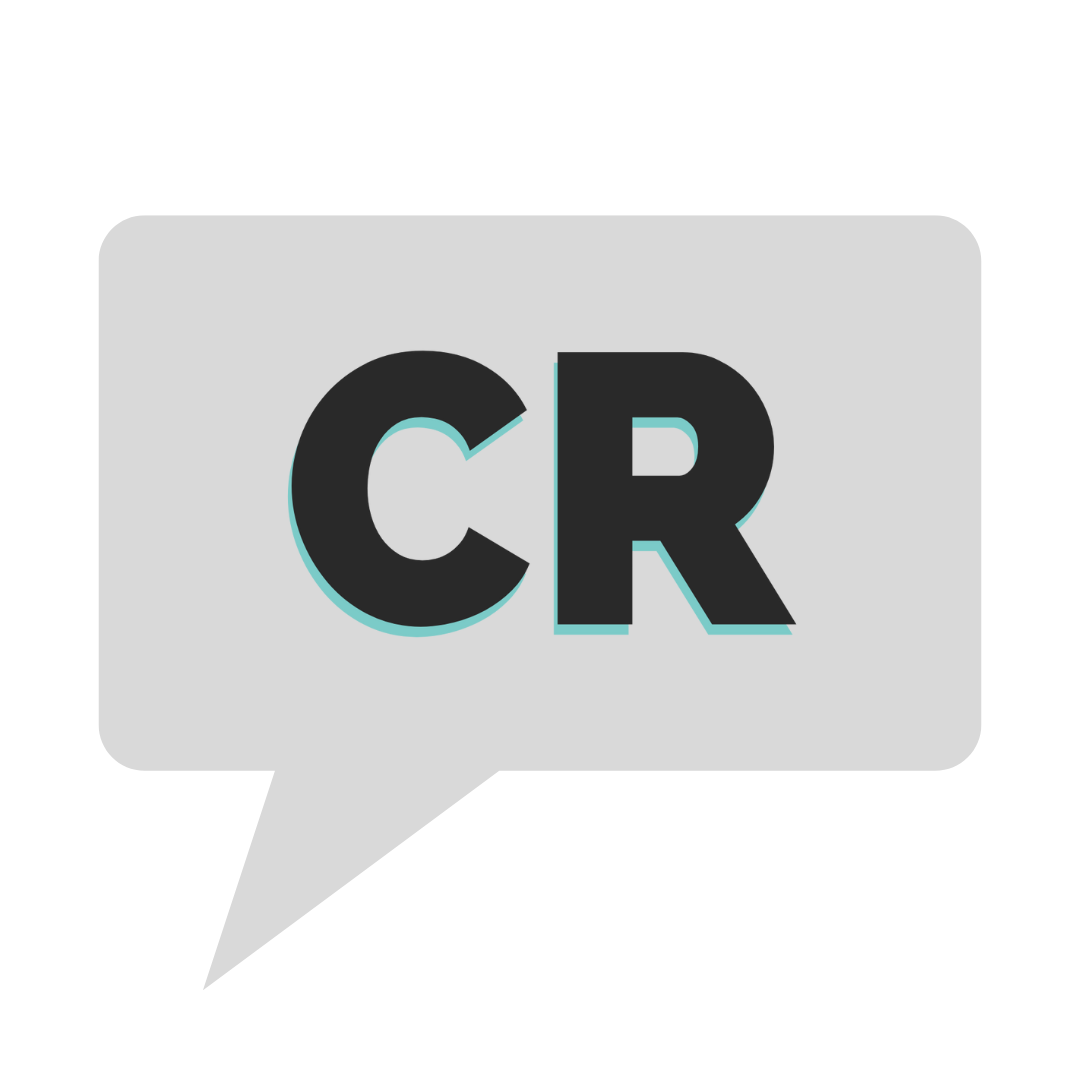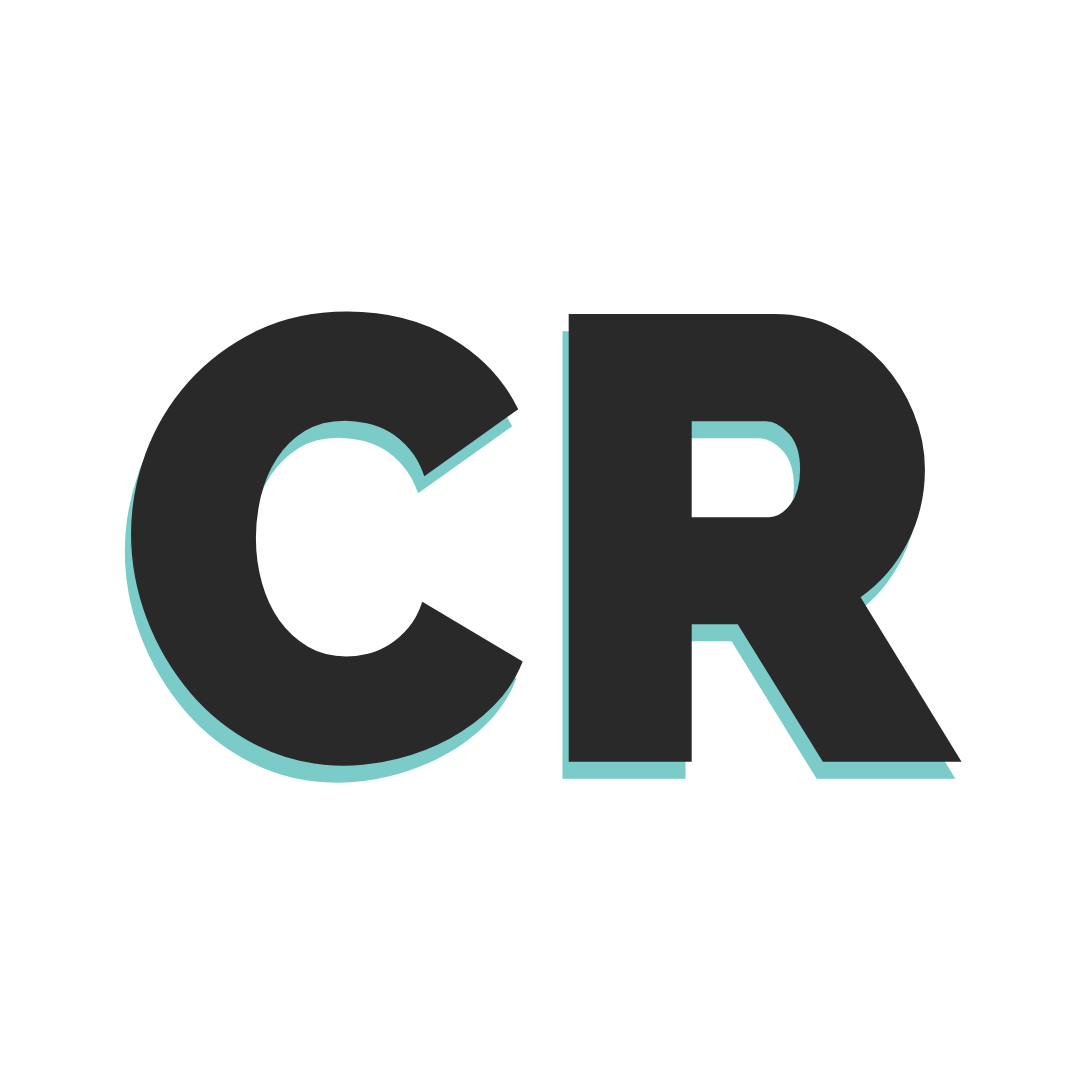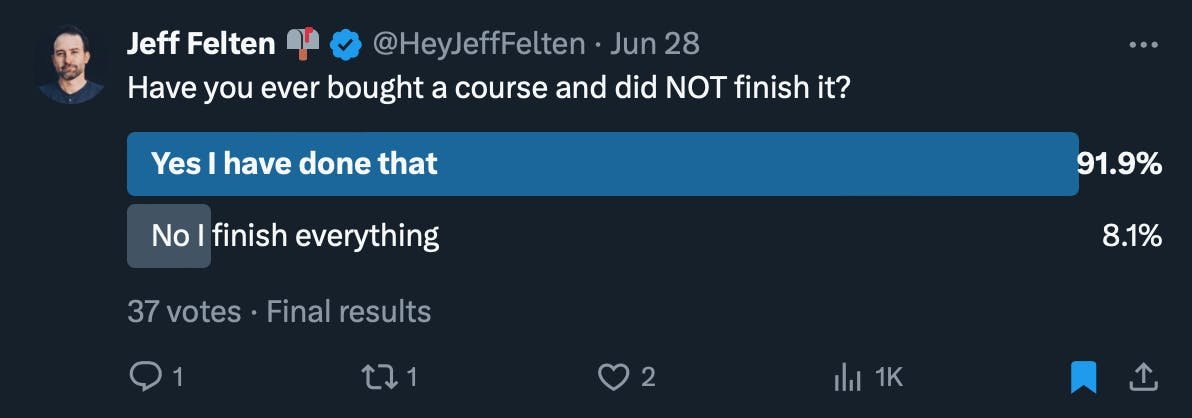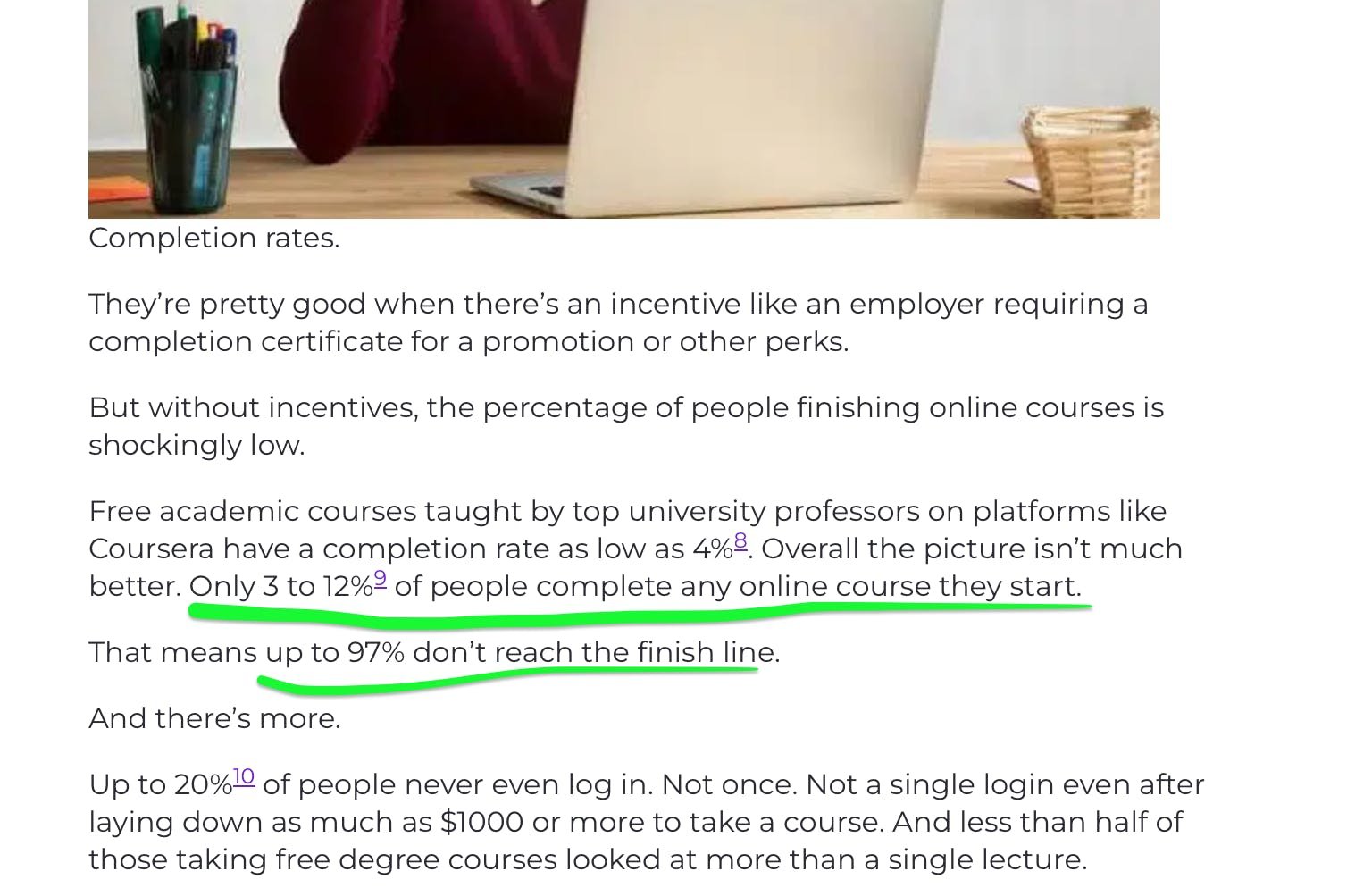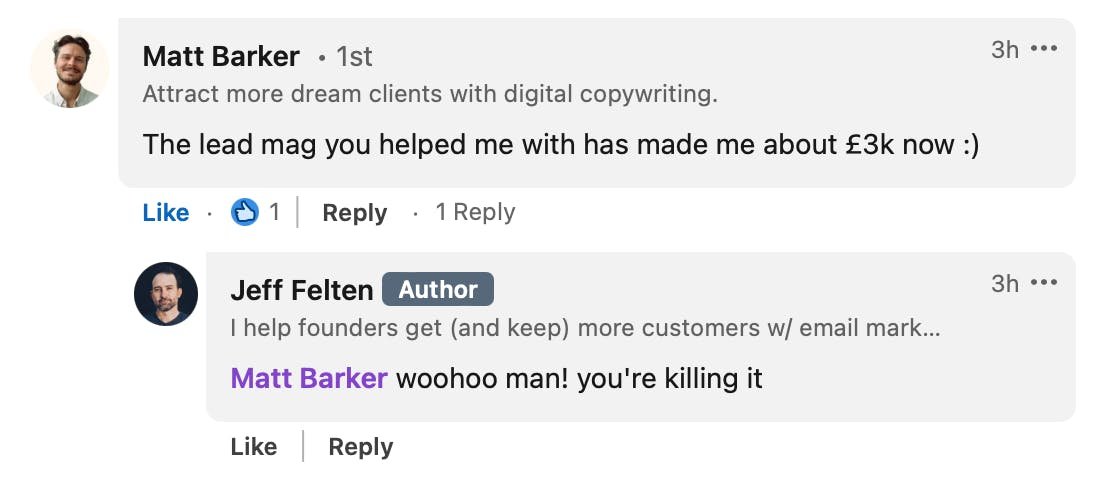If Email Marketing were IRL
Heads up: If you like this lesson, I send out 2-3 just like it each week. Join 2,400+ others here:
~ 672 words on "If email marketing were IRL" ~
So my wife and I sit down at a quaint local Italian restaurant.
We already know what we want to eat because we’ve been here many times.
After we’re seated, the server walks up to the edge of our table.
“Hello, I’m Sarah and I’ll be taking care of you tonight.”
“Can I start you out with a drink?”
“Yes! We’ll have two glasses of Pinot Noir. And actually…we’re ready to order too if you’re ready for us.”
“Sure, what would you like?”
“We’re going to split the chicken parm and a Caprese Salad.”
“Sounds good! I’ll put that order in and be right back out with those Pinot Noirs.”
~ Order Created ~
We like to split the chicken parm here because the portions are huge and this particular dish is to die for.
2 minutes later, Sarah comes back with our wine and a basket of bread.
~ Ding. This is an email ~
My wife and I spend the next 10 minutes chatting and laughing about the funny things our daughter did today.
The dim candle light gives her face a really beautiful glow.
And man…this bread and oil is so damn good.
I wonder what spices they put in the oil?
Our server, Sarah, anticipates that the bowl of dipping oil is running low and refreshes us without even asking.
“Thank you Sarah, that was very thoughtful!”
~ Ding. This is an email ~
“Of course! Would you like another glass of Pinot?”
“You know…I think I will. Thank you!”
Sarah nods, grabs my glass, and heads back to the bar to get my refill.
I didn’t plan to drink a second glass, but the experience is just so great here tonight.
~ Ding. This is an email ~
A few minutes later, our food arrives — perfectly plated.
The aroma of cooked tomatoes and fresh basil fill our nostrils.
“Would you like extra parmesan on your dish?” Sarah asks.
“Does a spider want a fly?!” I replied. (That means YES).
We watch as Sarah grinds fresh parmesan cheese on top of our pasta.
~ Ding. This is an email ~
“Alright, I’ll leave you guys to enjoy your meal. If you need anything else, just flag me down.”
“Oh, and make sure you save room for dessert. Tonight we have homemade cherry gelato. It’s UN-REAL.”
~ Ding. This is an email ~
Our jaws drop.
We LOVE homemade gelato.
But we’ll see how things go with this chicken parm.
Fast forward 15 minutes:
The pasta we split is 95% gone and our bellies are pretty full.
It was all so amazing.
Nobody does chicken parm quite like these guys.
But…
We were thinking about that homemade cherry gelato.
When Sarah came back over to check on us, she gave us the hard pitch on the gelato.
Creamy.
Smooth.
Made with cocktail cherries.
Churned just this morning.
SOLD.
This...we did not split :)
~ Ding. This is an email ~
It was a no-brainer.
Neither of us wanted this dinner experience to end.
We left the restaurant with an amazing date night.
Even though we spent more than we’d planned, it didn’t matter.
We got everything we wanted out of it and more:
An “above and beyond” experience.
A stellar product & service.
A delicious upsell that made it all even better.
We’ll remember this particular date for a very long time.
Obviously this is a metaphor.
But my goal is to get you thinking:
About your customer journey
About things you want to happen in your business
An email sequence is a tool to amplify things you want to happen in your online business.
The emails are just the important touch points that enact your goal.
Do you see?
You just need to set a goal, determine the mechanisms to achieve the goal, and set it all in motion.
Open up your mind a little and it can help you do just about anything.
If it’s something you’re already doing IRL, there’s a good chance you can turn it into emails.
Thanks for reading!
Jeff
P.S.
Got gaps in your email marketing strategy?
If you're interested in taking it seriously in 2025, I can help.
It feels complicated but with weekly coaching, we'll tackle it together — step-by-step.
Reply to this email and say "Hey Jeff, I'm interested in coaching"
(why wait for the ball to drop?)
Heads up: If you like this lesson, I send out 2-3 just like it each week. Join 2,400+ others here:
p>
A handshake from Ted.
Ted sat back in his chair, brow furrowed a little.
The 2 questions I asked made him think — in a really good way.
"What is a crucial moment in your existing sales process?"
"What do you believe is a key part of how you seal the deal in real life?"
See, we were building a new welcome sequence for Ted's business.
(He was a 15+ year business coach...an OG)
And they'd never done email marketing before, so he naturally carried a bit of skepticism.
But with these 2 questions, Ted realized what we were actually there for.
We weren't there to create 'more content' — like some silly gimmick or tactic.
We were there to build an asset — to automate (or simulate) their sales process.
Here was Ted's reply:
"Before the pandemic, we used to meet new prospects at networking events. I could look them in the eye, ask them about their business, and give them a handshake. I believe this showed them they could trust me."
Pure. Gold.
See, in 2021, things were still very far from 'normal.'
Networking events were still on pause, so Ted and his crew had a harder time meeting new folks.
The trust-building of listening, a look in the eye, and a handshake was a CRUCIAL element of how they got new clients...
And it wasn't possible IRL anymore.
So I told Ted:
"Well, I don't think we can give a real handshake over email, but we can definitely make the rest of that happen."
Here's what we did in Ted's welcome sequence:
I asked Ted to record a casual 2 minute video of himself
He shared why he started his business and an early struggle
He then asked about THEIR business
Immediately under the video (in the email), we asked the reader to share about THEIR business.
What's going well
What's a current struggle
What they're excited about
The goal?
To take what worked IRL and apply it to their automated sales process (the welcome sequence).
Was it perfect?
Nope.
But we got as close as we could to a real handshake.
We turned email into a conversation, instead of a monologue.
Because that's how Ted earned trust in real life with real people.
And that's how he wanted his marketing to feel.
TAKEAWAY
Instead of trying some crazy tactics to sell in your welcome sequence, try instead to incorporate what's working for you IRL in DMs and sales calls.
If it's working IRL, it'll probably work in your email marketing, too.
You don't need to reinvent the wheel.
Hope this helps.
Give me a reply if you found this interesting!
Jeff
P.S.
That project with Ted was an early influence on how I built the 8-email framework inside The Creator's Welcome System.
The emails inside the system are intended to earn the trust of new prospects and pull from real life sales success.
If you'd like to automate (simulate) your sales process in 2024, I think you'll benefit greatly from using my system.
(Mike is not a copywriter, he’s a dentist. He got a $3,000 client a few days after implementing it.)
>>> Create your own email 'handshake' here <<<
Get more of these “quick-read lessons” in your inbox each week (and start getting more ROI)
Don’t make me yawn. Make me feel.
My family and I spent 3 days in Disney World this weekend.
It was crazy expensive — but so worth it.
Let me tell you why.
(Yes, I'm gonna be that guy relating marketing lessons to real world things.
Sue me.
Actually...don't sue me because I just spent a ton at Disney!)
POV — that's me in full Disney Dad mode.
You see...
It wasn't just that the all rides at Disney were awesome.
It wasn’t that EPCOT had tasty food and unique features.
It wasn't just that the parks were clean and immaculate and impressively creative.
It wasn't even "the experience" that makes it worth it, although that was amazing, too.
So what is it?
Why are we willing to spend ungodly amounts on something as trivial as Disney World — and then say it was worth every penny?
I mean, come on…
Grown-ass-adults with no kids walk around looking dumb in Mickey Mouse ears — and don't feel the slightest bit self-conscious.
Park-goers walk around all day in the sweltering Orlando, Florida heat and keep smiles on their faces the whole time.
It’s because Disney World makes us feel things.
...Things we didn't even know were there.
It conjurs up memories from our childhood.
It brings out the best parts of us.
It makes us feel like a kid again.
It makes us feel free to express ourselves again.
It feels like they get us.
It makes us willing to endure standing in long lines, sweating all day, and aching feet.
The attention to detail makes us feel like they care — it feels like we're important to them.
The songs, the characters, the buildings, the rides, the intentional smells, the elaborate shows, EVERYTHING.
It makes us feel nostalgic about our very best memories.
It makes women remember what it felt like to want to be a princess when they were a child.
It makes us feel excitement for OUR OWN young children.
It makes us feel…joy.
Do you see yet?
I hope you don't miss this lesson.
Because deep down, customers open their wallets when you make them feel things.
Confident. Joyful. Optimistic. Nostalgic. Angry. Fearful. Accepted. FOMO.
There are lots of feelings you can tap into.
And that's the way marketing emails should be when you write them.
You won't be successful if you focus only on features or benefits.
You won't be successful if your marketing content sounds like everyone else.
You won't be successful if your writing makes me yawn.
Because there are THOUSANDS of people saying exactly the same things you are.
And that's how your emails just become...noise.
Without feeling...few people pay attention. Your pitches get glossed over. And of course, nobody buys.
I'll leave you with this.
You DO NOT need to be a world-class copywriter to write effective emails.
I stand by that.
But you DO need to sharpen a few important thinking skills.
And learning to tap into your readers feelings is one of those important skills.
So the next email you write, take a step back and read it out loud.
If a line sounds boring, rewrite it.
Instead of saying you'll "help them build the business of their dreams", spend 30 seconds thinking about what building the business of their dreams FEELS like...then write that.
Don't try to write marketing emails. Try to make people feel.
I hope you enjoyed this lesson, I had fun writing it!
Rooting for you,
Jeff
P.S.
Did you ever think you could feel love for an email sequence you wrote?
Neither did many of the folks who’ve purchased The Creator’s Welcome System.
Check out some of their reviews here.
Get more of these “quick-read lessons” in your inbox each week (and start getting more ROI)
The question that desperately needs to be asked…
A month ago, I polled my Twitter audience on something.
(it will always be Twitter, by the way)
I asked a question that nobody else seems to ask.
Take a look:
Now, before you say it, I know that 37 votes a small sample size (although 92% is pretty damning).
But it validates research I've also found online here:
Here's the takeaway:
Assume that people's natural tendency is to NOT finish your course or use your product.
Think about it.
I bet you've bought an online course or product that you never used too.
As consumers, we buy with the best of intentions. But when it comes to actual implementation / execution?
WE NEED HELP.
It comes across like we only care about getting the sale, NOT the actual results for our customers.
And if you’re on my page reading this, I know that’s not true for you.
So if you have a course, product, or community...
You have a DUTY to make sure customers get the most out of it.
Those stats from earlier?
Your goal should be to flip it around.
Make damn sure that 97% of your customers are actually using your product.
Let me tell you why:
People who finish/use your product are more likely to get a win
People who finish/use your product are more likely to buy again from you
People who finish/use your product are more likely to rave about it to someone else
You see...this is customer experience meets marketing.
To deliver extraordinary experiences to your customers...
To make sure they get wins with your product...
Because when you help them look good, it makes you look really good.
That’s all marketing, my friend.
(And it comes back around)
So how do YOU plan to flip those stats around for YOUR course, community, or product?
I know how I like to do it (I'm the email sequences guy, remember?).
But I'd love to hear your idea.
Rooting for you,
Jeff
P.S. If you’d like help writing a sequence like this for your product, there’s a bonus 90-minute training (with templates) inside The Creator’s Welcome System on exactly this topic.
Because what good is it to sell your products and then leave your new customers hanging?
Get more of these “quick-read lessons” in your inbox each week (and start getting more ROI)
Three years (of actually trying) to make $500.
Recently I shared a post on social media about my digital product revenue over the years.
Here's the rundown.
My Digital Product Revenue Since 2020:
2020: $0
2021: $0
2022: $371.12
2023: $5,713.90
2024: $43,935.88
I want to hone in on two specific things today that I DID NOT share on social media.
And NONE of it involves my 2024 revenue.
THE FIRST, MOST IMPORTANT THING:
It took me 3+ years to make $500 from digital products.
I remember very vividly what it was like to make something that nobody seemed to want.
But I kept trying.
The zeroes are inevitable in the beginning, I think.
It's part of the process to learn what your audience does and does not want.
The important thing is that you start — AND that you keep iterating as you learn.
THE SECOND IMPORTANT THING:
In 2023, I made $5,700 from digital products.
I was over the moon about it.
It was huge for me — even though those numbers were relatively small compared to what I saw on social media.
And it showed me two things:
1) That I could actually do it
2) More of what people actually wanted from me
Had I not experienced 2020-2023...
Had I not created 6 FAILED products...
Had I not created a semi-successful product in 2023...
I absolutely would not have done this well in 2024.
A secondary source of revenue is a huge relief for a solopreneur.
And today, I'm so thankful that I started trying in 2022.
Hopefully, you're further along than I was at that time and the curve is shorter.
But my hope today is that you start.
Turn your expertise into something scalable.
Your knowledge is worth way more than you know.
Rooting for you,
Jeff
P.S.
If you've got a product, service, or course you'd like to sell more of, The Creator's Welcome System was built for you.
It's literally the smartest way to start selling on autopilot with email.
You can potentially have it up and running THIS WEEK.
Oh, and one conversion alone could net you exponential ROI.
What other email marketing course out there can say that?
Get the proven email system 285 solopreneurs are using.
Get more of these “quick-read lessons” in your inbox each week (and start getting more ROI)
Who’s hedging bets on Elon and Zuck? Not me.
Let me tell you a very quick story.
Actually...
Three very quick stories.
Story #1
I recently guested on a podcast with someone who found me on Threads.
She wanted to chat about email marketing.
In the course of our lovely conversation, I learned that her Instagram account recently got temporarily shut down for a very harmless comment.
She has 54k Instagram followers.
Poof.
Gone in an instant. (It came back after a week or so)
Story #2
There's a guy I know on Twitter/X.
He built an 8k following there and lost it.
Twice.
First time, permanently. Second time, for 6 months.
Story #3
A good friend of mine built 180k followers on Instagram over 2-3 years.
Someone pulled a crazy, not nice "black hat takedown" tactic on his account.
He had to go private, lost all of his past analytics, nuked his reach, and his once thriving Instagram account never recovered.
You know what sucks about all 3 of these?
When this kind of stuff happens on social media...
You are powerless.
You have zero control.
Social media is a wonderful place, but it's rented real estate.
You see...
Nobody ever thinks it'll be them.
And that's why I ALWAYS tell online brand builders:
Don't wait til you've grown on social media to start your email list.
Grow them at the same time.
Idk about you but...
I'm not willing to bet my business, my future, my time, or my income on Elon and Zuck.
That's why I'm so bullish on email marketing.
You aren't at the mercy of an algorithm.
You can build stronger relationships.
You have direct access to people.
You can make direct offers.
But I don't need to tell you this — you know it. You wouldn't be here right now reading this if that weren't the case.
So just consider this a reminder:
Start "deplatforming" your social followers onto a place you own (ahem...your email list).
Or else...
You could be the 4th story in my next email.
Get more of these “quick-read lessons” in your inbox each week (and start getting more ROI)
Why your lead magnet might suck.
Here's how I was taught about lead magnets:
(maybe you can relate)
“Just solve a problem for your target audience and give away free value.”
Well...is that basically how you were taught, too?
And...how's that working out?
Probably not good, I imagine. If you're anything like me.
See, my first lead magnets were terrible.
They were nothing more than glorified blog posts.
5 Ways to XYZ
7 Steps to This or That
But here's a secret (that probably isn't actually a secret):
If a lead magnet FEELS like a glorified blog post, nobody worthwhile is gonna give up an email address for it.
Sorry, not sorry.
If it's just another generic piece of content, you're gonna get a bunch of generic subscribers.
But JEFF...don't I want a bunch of subscribers?
Yes and no.
You do...
But I'd rather you have a small, engaged list of people ready to buy from you than to have a huge list of tire kickers and freebie seekers.
Like, I'd prefer that 100x over.
But hey, to each his (or her) own. If you'd prefer to have a huge list of people who may or may not ever buy from you?
Go build your Ultimate Guides, mindless checklists, or whatever.
Be my guest.
You can create ten generic lead magnets if you like wasting time to see what sticks.
But if you'd like to create a REAL asset?
Like...a lead magnet that generates *gasp* LEADS?
There are a few things you'll need to know.
Let me show you.
1) Target one ideal customer per lead magnet.
Lead magnets meant to attract "anyone who" or "everyone that" are going to be less effective. Target a specific persona so you can then lead them to a specific offer that's perfect for them later.
2) Consider the intent of your ideal customer.
Someone who'll hire you for a service is likely not the same as someone who is a DIYer. This means they're coming from different starting points. Which means...your lead magnet must accomplish something different for each one (if you want them to take the next step). *DFY customers need to know you know your stuff and that you can help them achieve their goals. DIY customers want more help DIYing. Make sense?*
3) Each lead magnet should lead into ONE offer.
The lead magnet should give away step one for free, then your welcome sequence should position the next step (your offer) as a total no-brainer. By doing this, you aren't just feeding your ideal clients "more content" or "pitching them." You're leading them on a journey that you have completely mapped out for them already.
4) Don't stop with a lead magnet.
The absolute worst thing you can do — send a lead magnet and never follow up again. Send a 7-8 email welcome sequence to make sure they use the lead magnet AND strongly position your offer as their next step. Here's a welcome sequence template that can help you get this built in just a few hours.
As I said earlier...
What's the point of a lead magnet if it doesn't help you get more business?
By taking this approach, you aren't just getting subscribers...
You're attracting and nurturing people who WILL be interested in your offer.
Like Matt here:
Ok, this one has gone on long enough now.
It's the weekend. Get outside.
I hope this has been helpful to you.
Rooting for you,
Jeff
Get more of these “quick-read lessons” in your inbox each week (and start getting more ROI)
How it feels to be ghosted.
Imagine this:
You get asked on a date.
Excitedly, you say, "yes!"
You're curious about this person, they seem interesting AND interested in you.
Who knows where it could lead!
The day arrives.
So you get ready for the date.
Put on your best outfit and smell-goods.
Drive to the restaurant — it's nice.
You're a little early, so your new "friend" is not here yet.
Totally ok, you'll stick with drinking water until they arrive.
But soon... 15 minutes goes by.
30 minutes.
An hour.
No show from your new friend.
And no text or call either.
You decide to leave, not waiting around for someone who won't show up.
The hours, days, and weeks pass by after you got stood up.
And still...
No word from your friend.
Eventually, you completely forget about them and move on.
Until ONE DAY...
They reach back out. This time, they want to go see a show with you.
But you've already forgotten them. AND...
You've found someone else.
•••••••
This is not a story about dating.
This is a story about your email list.
And this is simply a friendly reminder to send an email to your list this week.
They signed up for a reason — and that reason is because they were interested in you.
With the right approach, that interest may turn into a mutually beneficial relationship!
The worst thing you can do is leave them hanging.
You'll miss out on:
revenue
reputation
relationships
If you feel stuck and don't know what kind of emails to send your list, here are a few ideas to get you started.
Just...
Don't...
Ghost...
See you again soon,
Jeff
Get more of these “quick-read lessons” in your inbox each week (and start getting more ROI)
Sell…no, nurture!…wait…what do I do?
I've been in and around email marketing for 6 years now.
And there's one thing I’ve truly never understood:
The distinction between "sales email content" and "nurture email content."
It's like you either have to hard sell...or just deliver free value.
While I used to toe that line (and it was confusing), I've adopted a slightly different approach in the past year or so:
→ Sell in every email...but not the way you're probably thinking.
See, I don't mean for you to say in every single email:
"BuY mY sTuFF!!!"
Here's what I mean by "sell in every email":
Every email sells something.
Even if it doesn't have a CTA or "ask."
Even if you don't mention your product or service.
Sometimes...you're selling trust.
Sometimes...you're indoctrinating readers to your approach.
Sometimes...you're positioning yourself as the go-to person.
But here's a distinction — you're not just "giving value" to be a helpful person here.
Make no mistake, those things are very crucial parts of making more sales.
You're very intentionally setting yourself up to make sales down the road.
That way, when you DO ask...it's a no-brainer to buy from you.
Do you see what I mean?
Now...
I'm not opposed to making offers in every email. Just do it naturally and lead with value before asking people to buy.
That's why the first 3 emails in my 8-email framework are entirely devoted to earning trust.
It's not about just "being helpful."
It's about "being helpful with the end in mind."
You see...
Selling IS nurturing.
Nurturing IS selling.
When you adopt this mindset, every email you send creates an opportunity for more sales.
Rooting for you,
Jeff
Get more of these “quick-read lessons” in your inbox each week (and start getting more ROI)
OVERHEAD = DEATH
Have you ever read Company of One by Paul Jarvis?
There's a quote I think about all the time from that book.
It said: "OVERHEAD IS DEATH."
In other words, if you plan to stay small, overhead will absolutely kill you. So keep it to a limit.
Idk about you, but I plan to keep my business small.
And not in terms of revenue...in terms of people.
But to run a full business, you need people.
Or at least...you need what people can do.
See, automated email sequences are your "overhead-busting superpower."
(They're like having a team of people working for you 24/7)
Now, you may not want to be a solopreneur forever like me and that's fine.
Either way, it's probably a good idea for you to start leveraging the FULL power of email marketing soon.
See, we talk a lot about "making money" with email...and that's all well and good.
But it's way bigger than that.
Here's what I mean.
There are email sequences designed for customer acquisition:
Attract your ideal audiences
Build / establish trust with them
Lead them naturally to your offer
(Examples: Welcome Sequence, Launch Sequence)
There are ALSO email sequences designed for retention:
help new customers get wins with your product
keep recurring customers on board longer
turn customers into raving fans
(Examples: Onboarding Sequence, Offboarding Sequence, Retention Sequence)
The main thing I want to communicate to you today is THIS 👇
Email is just a tool. You can do whatever you want with it.
If there's something keeping you up at night, maybe you can solve it with automated emails.
If you don't have enough time to do all the things you want for your customers — can you automate that journey?
How can YOU use emails to deliver such an extraordiary experience that your customers RAVE about you to everyone else?
I'm telling you...
A whole world opened up to me when I started thinking about email this way.
Instead of just being a way to make money...
It's a way to run your whole business on autopilot.
Get a little creative :)
Get more of these “quick-read lessons” in your inbox each week (and start getting more ROI)
Automate how you sell IRL [VIDEO]
If you've been in business longer than 5 minutes, you've at least heard of a welcome sequence.
But what the heck is it?
And how do you make one?
And WHY do you need one?
As a solopreneur, this email sequence is one of your greatest assets.
Because it sells for you on autopilot (so you can scale while staying solo).
BUT...
Most folks think a welcome sequence is just some random ass collection of magic emails that "sound pretty" or "say the right things."
The reality though?
It's much more logical than that.
Take a quick look:
The truth is, writing your welcome sequence is far less complicated than we make it out to be.
Here's what I want you to do:
Think about people who have bought from you before
Why did they buy?
Why did they hesitate to buy?
What kind of things did you say that they loved?
What stories do you tell that resonate with them?
What phrases / actions tend to seal the deal?
That's the type of content that should be included in your welcome sequence.
The key is to take things that are already working for YOU and turn them into email content.
The 8-email framework that I built is based on years of studying my own sales process AND my clients' sales processes.
So if you're like me and my clients:
solo business owner
simple business model
service provider or course creator
My system may be a great starting point for you.
Whether you get it or not, the big takeaway for you is this:
Your welcome sequence IS your sales process (just on autopilot).
If you need some inspiration, a starting point, or just something better than what you've got...
Your sales process could be running in your sleep by Monday.
